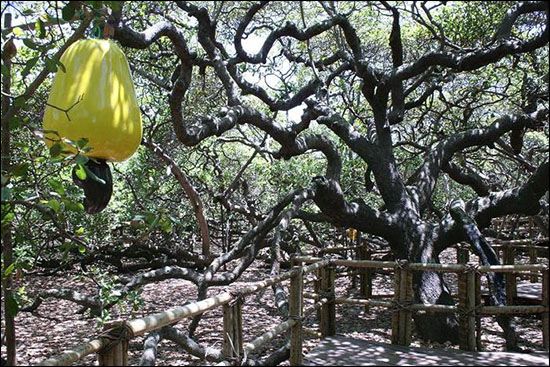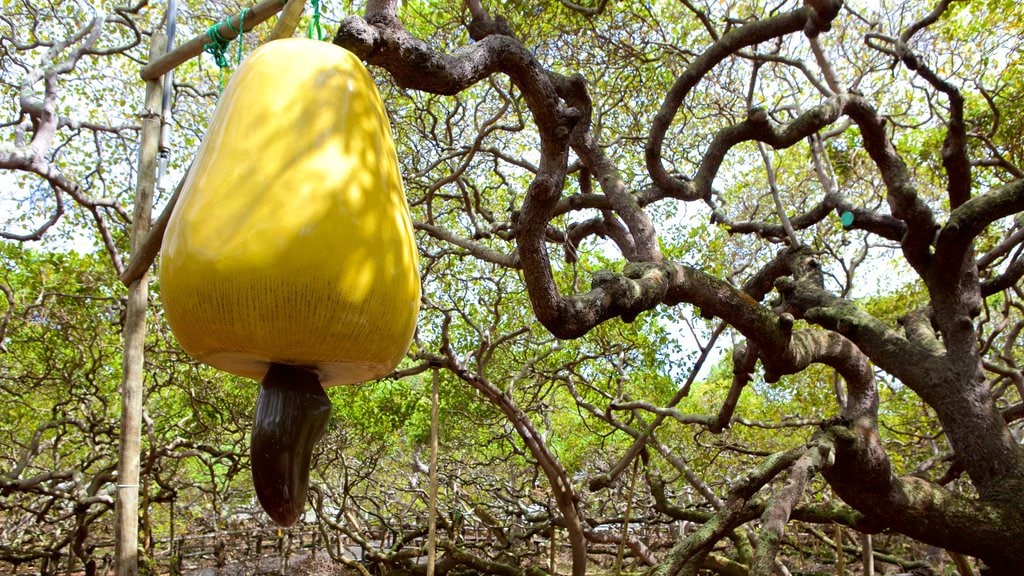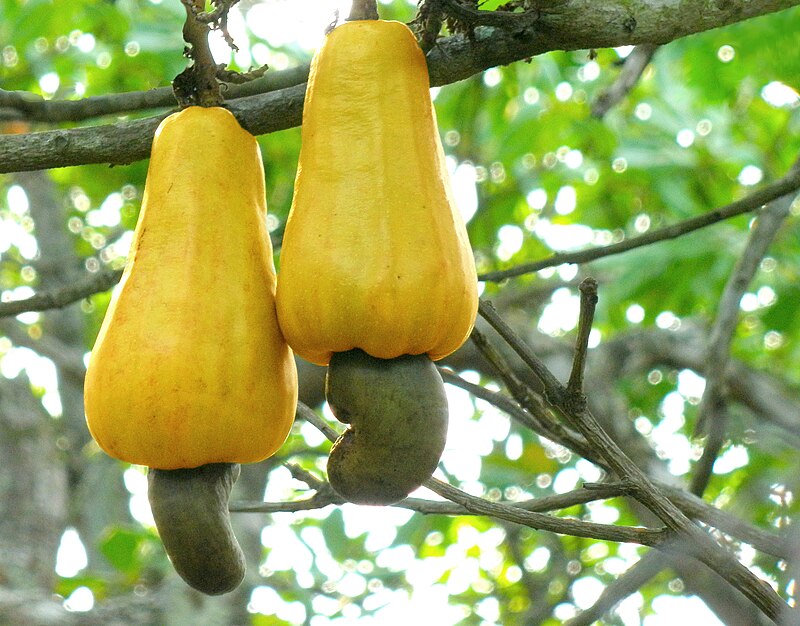One of the best arboreal sights in the world is located about 20 minutes south of Natal, Brazil. With good reason, California is known for its enormous redwoods and sequoias.
As you stroll through the expansive canopy, you might mistakenly believe that you are in a whole verdant, thick cashew forest, yet you are actually inside a single tree. About two acres, or nearly two football fields, are covered by the tree, which is equal to about 70 cashew trees of average size.
The age of the giant tree is murky. Some think it was first planted in 1888, but others claim it’s thousands of years old. In any case it still produces a large amount of fruit and nuts. (In Brazil, the cashew tree is prized more for its delicious but, alas, un-transportable fruit even more than its nuts.)
The tree’s record size is believed to be the result of two different genetic mutations. One, the branches grow sideways instead of upwards, eventually being weighted down and touching the ground. Second, instead of just growing along the earth as expected, when a branch touches the soil it sets down roots. Thus the tree spreads like a forest with multiple trunks growing over the two acres. 
Making the experience even more wonderful is the beautiful drive along the Brazilian coast down from Natal. The tree is located near the popular Praia de Pirangi (Pirangi Beach) in Brazil’s Rio Grande do Norte state. Just follow the cashew-shaped signs and you will be at the tree in 20 minutes. Admission is cheap. Yes, they charge admission to a tree.